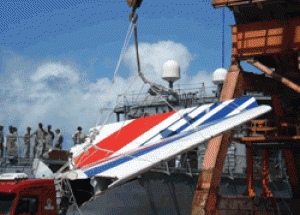Second safest year on record for aviation in 2009

Aviation enjoyed its second safest year on record during 2009, according to statistics from the International Air Travel Association (IATA), despite several high profile accidents.
According to IATA data, the 2009 global accident rate - measured in hull losses per million flights of Western-built jet aircraft - was 0.71.
That is equal to one accident for every 1.4 million flights, and a “significant” improvement on the rate of 0.81 rate recorded in 2008.
“Safety is the industry’s number one priority,” said IATA director general Giovanni Bisignani.
“Even in a decade during which airlines lost an average of US$5 billion per year, we still managed to improve our safety record. Last year, 2.3 billion people flew safely.
ADVERTISEMENT
“But every fatality is a human tragedy that reminds us of the ultimate goal of zero accidents and zero fatalities,” he added.
The 2009 rate was the second lowest in aviation history, just above the 2006 rate of 0.65. However, there were still a total of 19 accidents involving western built jet aircraft, 18 of which led to fatalities.
In total there were 685 fatalities recorded last year, compared to 502 in 2008. Nearly a third of these are attributed to the loss of Air France flight 447, which crashed over the Atlantic Ocean killing all 228 onboard.
Among the regions represented by the IATA, North Asia, Latin America and the Caribbean was the best performing, with zero western-built jet hull losses in 2009.
Three accidents were recorded in Asia-Pacific, four in the Middle East and North Africa, while North America (0.41) and Europe (0.45) both performed better than the global average of 0.71.
Africa had an accident rate of 9.94, significantly higher than their 2008 rate of 2.12. The continent once again recorded the worst rate of the world, with five Western-built jet hull losses with African carriers in 2009. African carriers account for two per cent of global traffic, but 26 per cent of global western-built jet hull losses.
The IATA also offered analysis of the causes of accidents.
Runway excursions continue to be a challenge, accounting for 26 per cent of all accidents, while ground damage to aircraft accounted for a further ten per cent.
However, pilot handling was noted as a contributing factor in some 30 per cent of all accidents.
“Safety is a constant challenge. Having made aviation the safest way to travel, further improvements will come only with careful data analysis. We must understand the underlying safety risk trends, not just from the handful of accidents each year, but by bringing together and analyzing data from millions of safe flights,” concluded Mr Bisignani.

